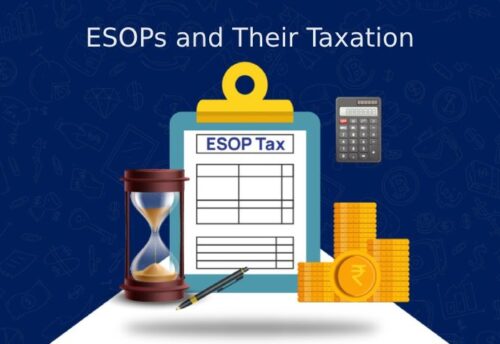
- 16/01/2025
- MyFinanceGyan
- 184 Views
- 5 Likes
- Tax
A Complete Guide to Taxation of Income from House Property
Owning a house is more than just a milestone; it’s also a doorway to various tax benefits under the Income Tax Act. Whether you reside in your home, rent it out, or own multiple properties, the taxation rules for income from house property differ based on its usage. These rules apply to residential homes, office spaces, shops, or buildings. By understanding these provisions, you can optimize your tax savings while staying compliant with the law.
In this comprehensive guide, we’ll explore how income from house property is taxed, the deductions available, and essential tips for accurate filing of your income tax returns (ITR).
Types of Properties and Their Tax Implications:
Self-Occupied Property (SOP):
A self-occupied property is a house used by you or your family for residential purposes. The Income Tax Act allows you to declare up to two properties as self-occupied. Any additional properties are treated as let-out.
Tax Treatment:
No tax is levied on a self-occupied house as it does not generate rental income.
Deductions:
Interest on Home Loan: Deduction of up to ₹2 lakh per annum is allowed if the loan was taken for construction or purchase, and the construction is completed within 5 years from the end of the financial year in which the loan was taken. Otherwise, the deduction limit is reduced to ₹30,000.
Example: If you took a home loan on April 30, 2019, the construction must be completed by March 31, 2025, to claim the full ₹2 lakh deduction.
Let-Out Property (LOP):
A let-out property is rented out to tenants for part or the entire year, generating rental income.
Tax Treatment: The taxable income is calculated as follows:
- Gross Annual Value (GAV): Higher of actual rent received or fair market rent.
- Less: Municipal Taxes Paid: Taxes paid during the financial year, such as property tax, are deductible.
- Net Annual Value (NAV): GAV minus municipal taxes.
- Less: Standard Deduction (30%): A flat deduction for repairs and maintenance, irrespective of actual expenses.
- Less: Interest on Home Loan: Full deduction for interest paid on a home loan with no upper limit.
The net amount after these deductions is taxed under “Income from House Property” at your applicable income tax slab rate.
Example: Priya rents her Mumbai house for ₹20,000/month, while the fair market rent is ₹30,000/month. She pays municipal taxes of ₹20,000 annually and has a home loan with an annual interest of ₹2.5 lakh.
Calculation:
- GAV: ₹3,60,000 (higher of ₹2,40,000 or ₹3,60,000)
- NAV: ₹3,60,000 – ₹20,000 = ₹3,40,000
- Standard Deduction: 30% of ₹3,40,000 = ₹1,02,000
- Interest on Home Loan: ₹2,50,000
- Net Income: ₹3,40,000 – ₹1,02,000 – ₹2,50,000 = ₹(-12,000) (loss)
This loss can be set off against other income (e.g., salary, business income) up to ₹2 lakh in the financial year. Excess losses can be carried forward for up to 8 years but can only be set off against house property income.
Deemed Let-Out Property (DLOP):
Properties beyond two self-occupied houses are treated as deemed let-out, even if vacant.
Tax Treatment:
- Deemed rental income is calculated based on the fair rental value.
- Taxable income is computed using the same method as for a let-out property.
Deductions You Can Claim:
- Principal Repayment: Deduction of up to ₹1.5 lakh under Section 80C for home loan principal repayment, applicable to all property types (self-occupied, let-out, or deemed let-out). Note: If the property is sold within 5 years of purchase, the deduction is reversed.
- Interest on Home Loan: Deduction under Section 24(b) as explained above.
- Municipal Taxes: Only taxes paid during the financial year are deductible.
Key Points to Remember for Filing ITR:
- Declare Property Type: Ensure accurate classification as Self-Occupied, Let-Out, or Deemed Let-Out.
- Claim Eligible Deductions: Include deductions for home loan interest and principal repayment. Avoid losing Section 80C benefits by ensuring the property is not sold within 5 years.
- Report Municipal Taxes Accurately: Deduct only the taxes actually paid during the year.
- Joint Ownership: In case of joint ownership, split income and deductions in proportion to ownership.
- Select the Right ITR Form: Use ITR-1 for one house property and no business income. For multiple properties or complex income sources, opt for ITR-2 or ITR-3.
Conclusion:
Understanding the taxation rules for income from house property empowers you to make informed financial decisions. By leveraging available deductions and ensuring accurate reporting, you can optimise tax savings while staying compliant with the law. Remember, proper tax planning can significantly enhance the benefits of property ownership.
Disclaimer: This article is for educational purposes and reflects the author’s personal views. It is not intended as financial advice or product recommendations.



